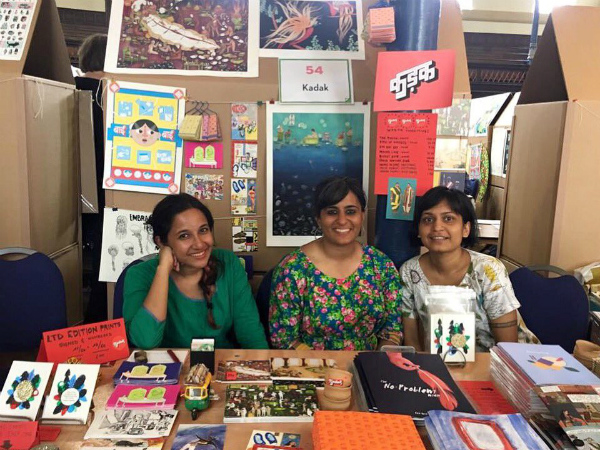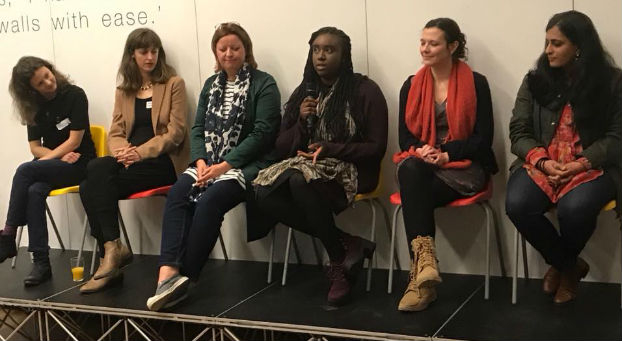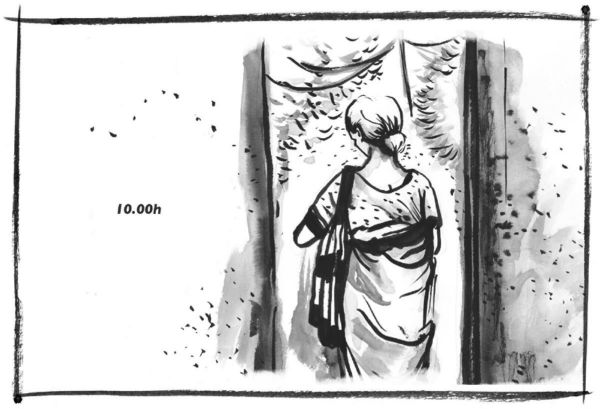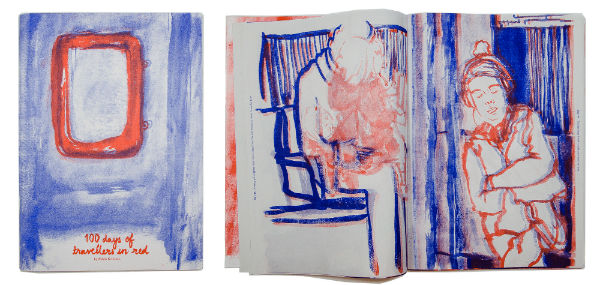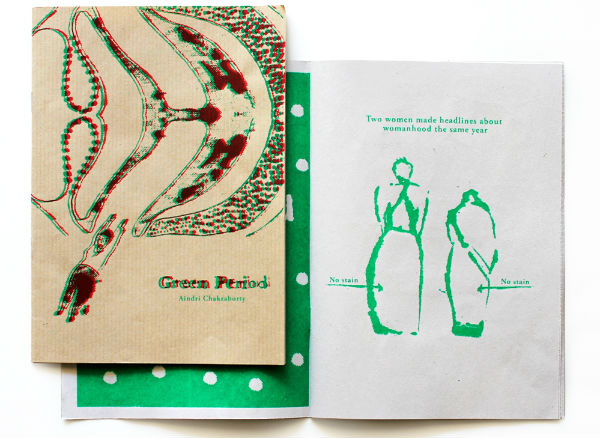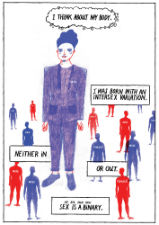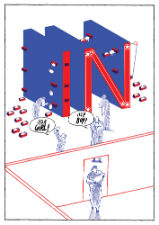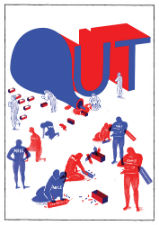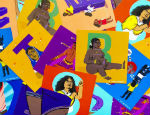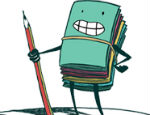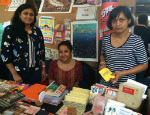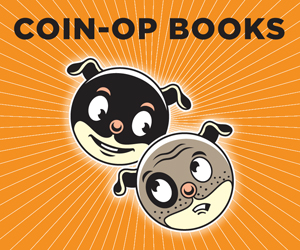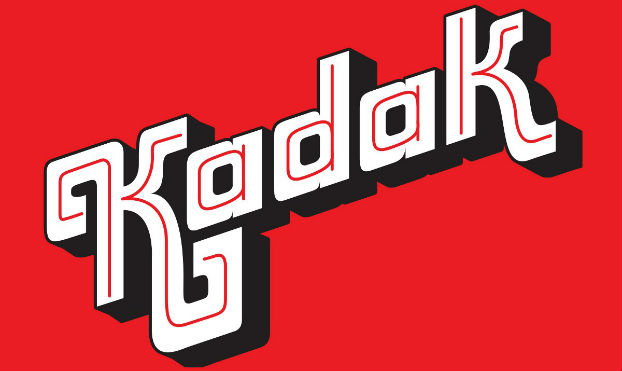
My personal highlight of 2016’s East London Comics & Arts Festival was meeting some of the artists who make up the Kadak Collective who were exhibiting at ELCAF as a group for the very first time. I wrote about them in our post-ELCAF report here that year having spent well over £60 at their table on the day on comics and zines encompassing a vast variety of illustrative styles.
Kadak describe themselves on their website as “a collective of South Asian women who work with graphic storytelling of different kinds. The women in Kadak engage with varied streams of inquiry in their art, which provides an invaluable insight into the preoccupations of a changing subcontinent. The stories and narratives move between the personal and political, question culture and examine subculture.”
The Kadak Collective’s Kaveri Gopalakrishnan, Akhila Krishnan and Aindri Chakraborty at ELCAF in 2016
This week at BF we’ll be running a comprehensive three-part spotlight on the creators who make up the collective (Aindri Chakraborty, Mira Malhotra, Aarthi Parthasarathy, Kaveri Gopalakrishnan, Janine Shroff, Pavithra Dikshit, Garima Gupta and recent Laydeez do Comics Prize-shortlisted Akhila Krishnan). Today and tomorrow we’ll introduce you to their varied illustrative practice before speaking to them in greater depth on Thursday about the collective’s ethos and story so far.
We start with a look at the work of Mira Malhotra, Akhila Krishnan, Aindri Chakraborty and Kadak collaborator Valentino Vecchietti…
Mira Malhotra
Can you give us some background on yourself, your practice and the media you work in?
I am a graphic designer, visual artist and illustrator. My interests primarily lie in image-making. I founded Studio Kohl (Mumbai) in 2013 where I work on branding, editorial and packaging, with an image-making perspective. I started out at an Applied Arts school where I got my BFA, worked for a while and then completed my Post Graduate in Graphic Design from the National Institute of Design, shortly after which I went independent. In my personal practice, I am inspired by DIY culture as a whole, politics, feminism, indie music, self-publishing etc. and the Indian identity in all of this. I use motifs relating to women from the subcontinent, novelty items from the bazaar, etc.
Contemporizing Indian visual culture is an overall goal of mine, I believe our culture is very much looked upon as something that needs to be stored in a glass case, in a museum, and I like the way Japan and Iran especially have a visual culture all their own without much influence from the western world. Unfolding the Saree zine (below) was one such endeavour of mine, where I fused elements of Riot Grrrl zines and ideas of women’s sexuality (Madonna/whore complex) into an easy-to-read piece that intentionally folds and unfolds to reveal/clothe.
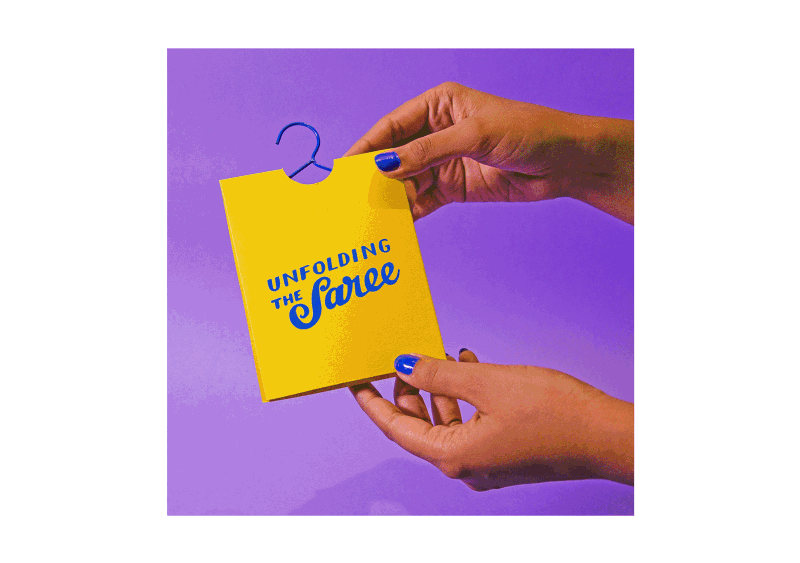
Could you describe the themes of your comics, zines or publications and tell us a little about your creative practice on them?
I think of my zines, even though I have only one out to date, (there are much more as WIPs), as visual essays, manuals/guides or just fun reading. It’s very important to me that while they’re indie, they eventually penetrate the mainstream, have great aesthetic value, and they transform information. My intent here is to collaborate with writers on my own concepts to make otherwise boring/dry/inaccessible content accessible to people by representing information in a friendly, more engaging format.
In the pipeline are zines that help the reader identify their privilege, one on societal outcasts called Pariah, another a manual on prevention of sexual harassment in the workplace, and still a couple more. I work on concept and content first, understand my print methods, find a writer and then draw/create based on that content. I like taking complex information and making it simple, and I think I’d primarily like to talk to young girls from 15-25 through my zines.
Akhila Krishnan
Can you give us some background on yourself, your practice and the media you work in?
I grew up in India, completing my BA at the National Institute of Design and my MA at the Royal College of Art. I work across a few different mediums; film-making, graphic storytelling, textiles, sound design, writing… Looking back I think that all of this came about because I did my graduation in film-making from a design school. So I was interested in time-based story-telling but also in materials and process. Therefore in my practice, story-telling/narrative always comes first but I am always looking for the best medium to express that story in. I don’t take the latter for granted. I don’t like be bound by format.
The shortlisted Laydeez do Comics Prize creators – from left to right Emma Burleigh, Emily Haworth-Booth, Cathy Brett, Sarah Ushurhe, Rebecca Jones and Kadak’s Akhila Krishnan
For example, in my comic and sequential art work, I find a sense of sound design is a big part of my process (even though it’s not tangible in the work) – it helps me plan pacing and rhythm of the ‘panels’. In my current professional career – I work in video design – but for live contexts; theatre, opera, projection mapping, installation. It is very collaborative and the element of live performance/experience and improvisation has also changed the way in which I think about making work – I think it is this and my background in documentary practice that has led to the form of my current work Alone but not Lonely: Most of the Time (below).
Could you describe the themes of your comics, zines or publications and tell us a little about your creative practice on them?
My comic-making practice is concerned with exploring ideas of narrative structure and format. I think of it as quite a fluid, experimental space for me to work in. The themes/process/subjects are very connected to non-fiction and documentary practice – a lot of the work (even if it is fictional) is very topical/political, autobiographical/inspired by real events. I use this space to make work about India, about women and the agency we have over our bodies, I explore domestic spaces and stories and I am very inspired by music as well – and I work through all of these using an observational drawing approach.
Sample art from Akhila’s 100 Days of Travellers in Red
Aindri Chakraborty and Valentino Vecchietti
Can you give us some background on yourself, your practice and the media you work in?
AINDRI: I am an animator-illustrator and comics started as a meeting ground between both. I don’t have a set ‘aesthetic’, though drawing and character is an integral part of most projects. I try to marry materials with content. I really enjoy it when they fit together. I started in commercial TV but have moved away into non-commercial/educational work for a while now. At present I am animating for a documentary on artist Bill Shannon.
My favourite way to work is in collaboration. I have illustrated three biography shorts so far with IN-OUT: Gender Through the Brexit Lens with Valentino Vecchietti as part of Kadak recently, and those have been one of my favorite projects.
Aindri’s Green Period zine will be familiar to ELCAF 2016 attendees
VALENTINO: My background is that I come from a working class, Southern Italian, immigrant family, based in the UK. I’m an intersex human rights campaigner, independent academic, and writer. In my academic and activist capacities I’ve worked with, amongst others: the British Film institute; Channel 4; The Equality and Human Rights Commission; as well as with universities, and for events such as the Women of the World Festival. I also contribute to Diva, a lesbian lifestyle magazine. In my creative work, I have a background in playwriting and screenwriting, as well as in comics.
Could you describe the themes of your comics, zines or publications and tell us a little about your creative practice on them?
AINDRI: I have noticed that I veer towards politics and childhood/coming of age themes. Most of my personal projects/comics are about going back as a way of unlearning. In collaborative context, childhood has been part of a few projects as was the case with Gender Through the Brexit Lens (below) with Valentino.
VALENTINO: I am interested in politics, marginalized groups, and inequalities, with an AFAB feminist focus (assigned female at birth). As well as personal stories which connect us. I love the medium of comics as a means to convey information and tell stories in unique and accessible ways. I enjoy collaborating with artists, and absolutely loved working with Aindri on our comic: IN-OUT: Gender Through the Brexit Lens.
Join us for Part 2 tomorrow when Broken Frontier will be talking to Aarthi Parthasarathy, Kaveri Gopalakrishnan, Janine Shroff, Pavithra Dikshit and Garima Gupta.
For more on the Kadak Collective visit their site here and you can see much more of the work in discussion here at their reading room on Medium (with store links where available). You can also follow the Kadak Collective on Instagram here.
For regular updates on all things small press follow Andy Oliver on Twitter here.





